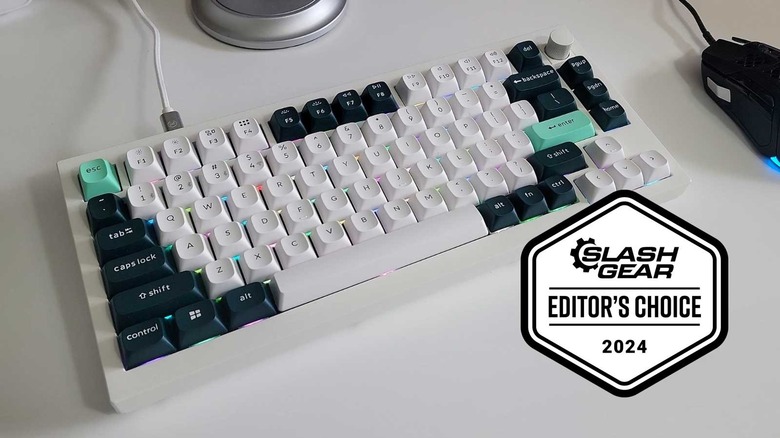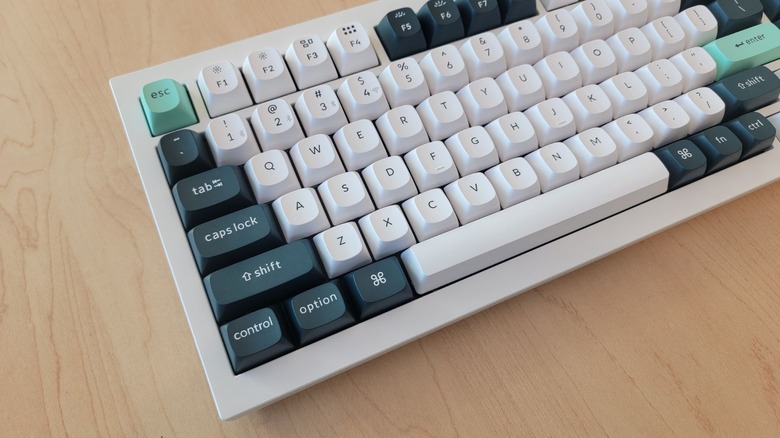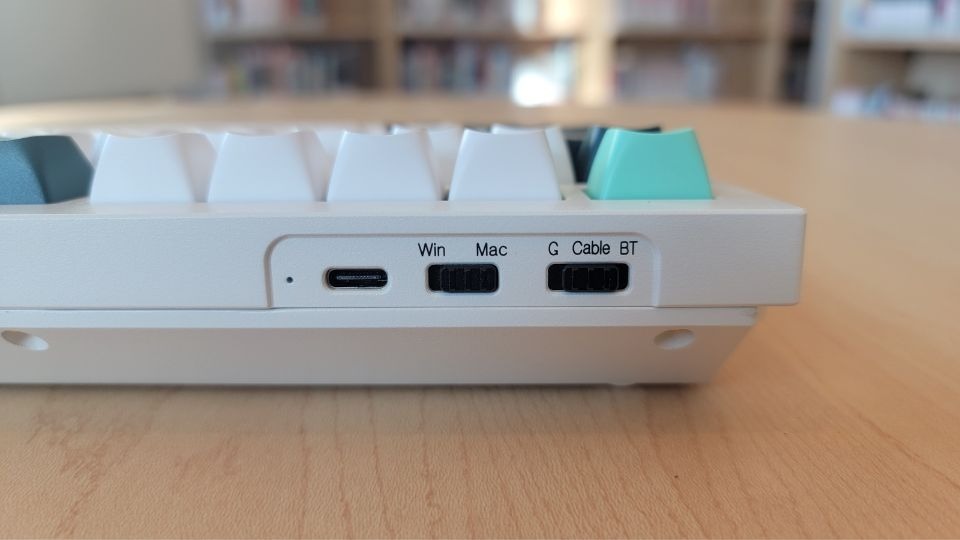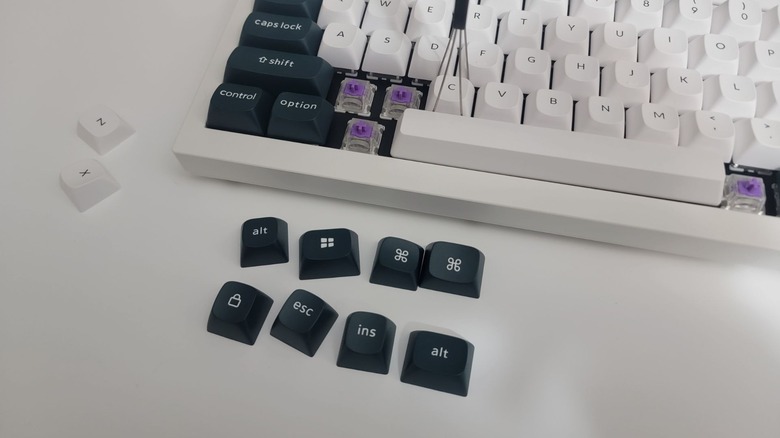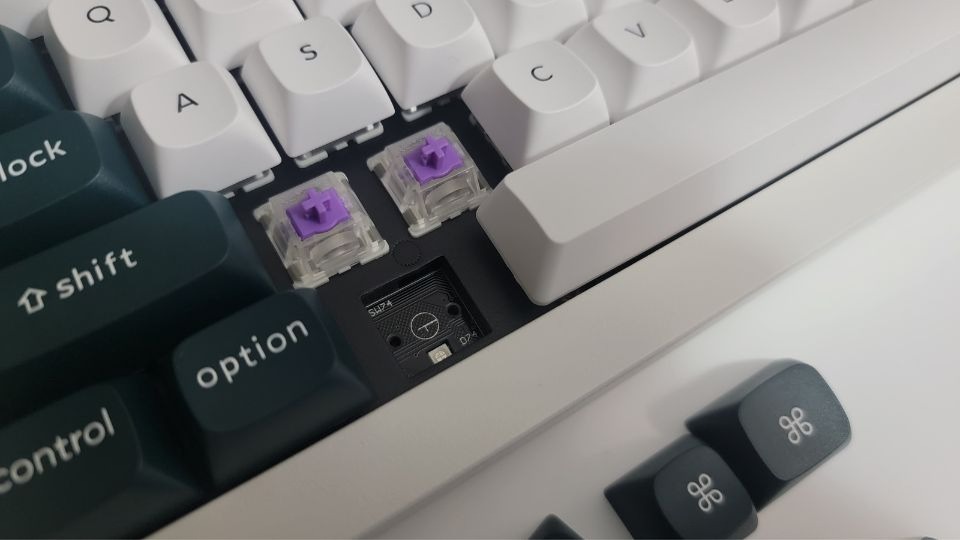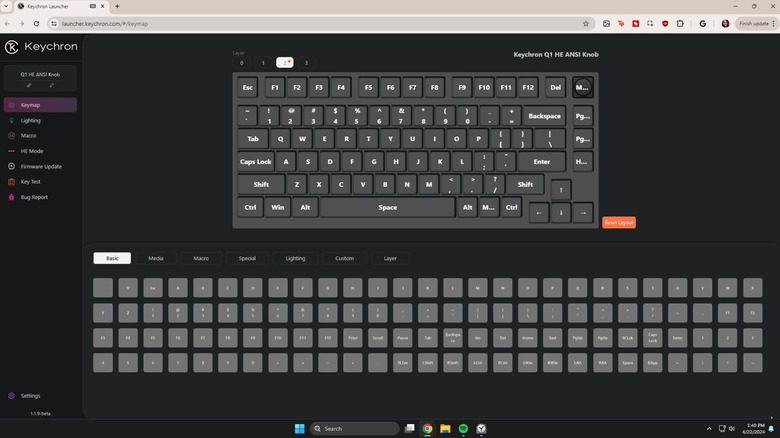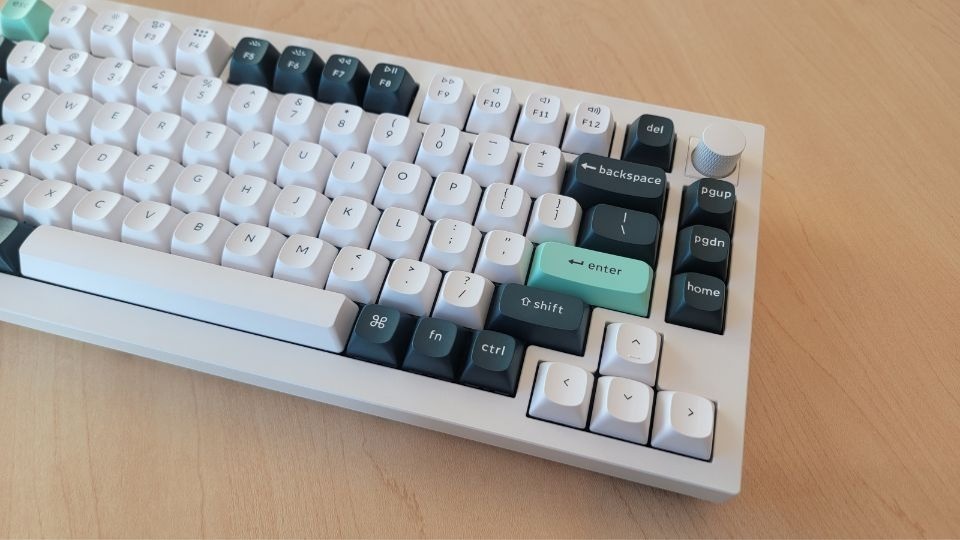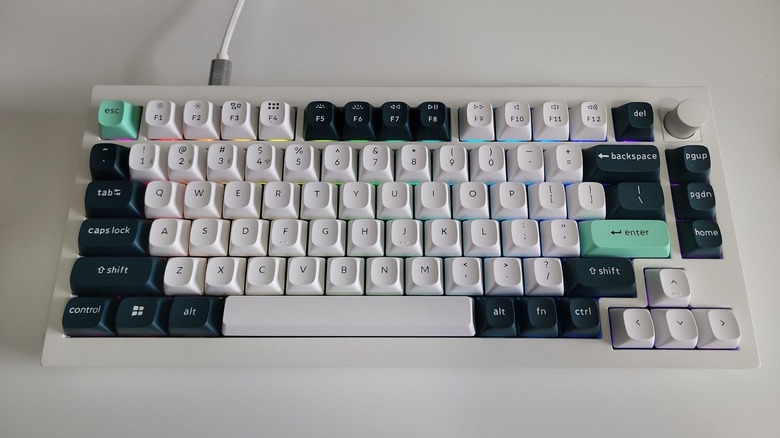Keychron Q1 HE Review: Top-Notch QMK Keyboard With Hall Effect Magnetic Switches
- Well-built, heavy aluminum body
- Hot-swappable Hall Effect magnetic switches
- Silky smooth, quiet typing experience
- Comfortable OSA PBT keycaps
- Multi-device connectivity and compatibility
- Highly customizable via Keychron web app
- Too heavy to be a compact travel keyboard
Keychron has a history of making high-quality, stunning keyboards, and its new Q1 HE is another one to add to the books. This keyboard is equipped with unique hot-swappable Hall Effect magnetic switches, a full-aluminum body, tri-mode connectivity, and customizable RGB and actuation points — and honestly, it was hard to find fault with the Q1 HE.
Most mechanical keyboards are equipped with optical mechanical switches of linear, tactile, and clicky varieties. The Q1 HE features magnetic switches, specifically Gateron 2.0 Hall Effect magnetic switches. Non-linear magnetic switches kind of defeat the purpose of magnetic switches being smooth and quick, so it's rare to find these.
As someone who likes tactile switches, I was expecting the Q1 HE's linear switches to feel a bit boring. But surprisingly, the magnetic resistance produces a satisfying feeling while typing, and I type just as fast on the Q1 HE as I do on my resident mechanical keyboard. Keychron provided a Q1 HE QMK keyboard for the purposes of this review.
Hefty, well-built 75% layout
The Q1 HE boasts an aluminum body that's cool to the touch, sleek, and incredibly durable. It's also pretty heavy at just under 4 pounds, so it's not a good travel keyboard despite its compact 75% layout and Bluetooth connectivity. But as a desk keyboard, that extra weight is much appreciated.
Within the aluminum body, there's a 4,000 mAh battery, a double-gasket design and acoustic pad for better typing sound, PCB-mounted screw-in stabilizers for smoother typing, and a powerful chip that allows a polling rate of 1,000 Hz in wired or 2.4 GHz modes out of the box.
Keychron's Q1 HE uses OSA (OEM Spherical Angle) PBT keycaps, and they feel wonderful to type on. They're slightly curved to fit your fingertips, and the PBT material resists finger oils well and keeps the keyboard looking brand new for longer than ABS material would.
My review unit has the Shell White colorway, which comes with a white frame and mainly white keys with a few dark blue and teal accent keys for a pop of color. This colorway looks stunning, especially on my white desk, but there's also a Carbon Black colorway with a black frame and mainly white keys with red and black accent keys.
This keyboard is a master of connectivity and compatibility. It's compatible with Windows, macOS, and Linux, with keys specific to Windows and macOS to swap out and a handy switch on the back to flip between different modes. Then, it can connect to your device via Bluetooth 5.1 for up to three separate devices, the included USB-A to USB-C wire, or the included USB-RF (2.4 GHz) dongle.
Hot-swappable Hall Effect magnetic switches
This keyboard comes with Gateron 2.0 Magnetic Hall Effect switches, hence the 'HE' in its title. By default, Keychron's Q1 HE comes with the purple Nebula switches, which offer a 40-gram start force and a 60-gram end force. Alternatively, you could custom build a Q1 HE and opt for the yellow Dawn switches or the green Aurora switches, which have a 30/50-gram and 50/70-gram start and end force, respectively.
All the switches are pre-lubed and linear, have a double-rail structure and an actuation range between 0.1 and 4 millimeters, and will last 100 to 150 million clicks. They're also hot-swappable, so you won't be stuck with one switch for the life of the keyboard. However, you can only swap out the switches for other magnetic switches.
To test how comfortable Keychron's Q1 HE and its Nebula switches were to type on, I averaged scores from three typing tests on this keyboard and my resident Keychron V6 keyboard with K Pro Banana switches. I averaged 96.3 words per minute on the V6 and 95.7 on the Q1 HE, and my average accuracy was 98% on both keyboards.
Typing on the Nebula switches is extremely satisfying. While there's no tactile bump, each keypress gives slight magnetic resistance that feels great and makes typing feel silky smooth and effortless. With the keyboard's sound-absorbing foam, acoustic pad, and silicone gaskets, the Q1 HE is very quiet to type on. You'll still hear feedback with every keypress, but it's not an overly clacky or clicky keyboard at all.
The only key that felt slightly out of place while testing was the Delete key, positioned above the Backspace key, whereas on most keyboards, it's up and to the right.
Programmable keys, customizable RGB, and adjustable actuation point
Keychron made its Q1 HE keyboard highly customizable, from the RGB backlight to actuation distance and programming for each key. The Q1 HE comes with south-facing RGB that you can customize using keys or Keychron's web app. There are 22 backlight settings to choose between, and you can customize the hue, saturation, brightness, and effect speed. Some presets also let you select a color from multiple values.
By default, the Q1 HE's keys have an actuation distance (or the distance you need to press a key for the keystroke to register) of 2.2 millimeters. Using Keychron's web app, you can customize the actuation distance for all keys or individual keys between 0.5 and 3.8 millimeters. So if you want to fully press a key while typing to prevent errors, bump the actuation point up, and if you want a faster keystroke response for FPS games, decrease the actuation point.
Each key can also be programmed to carry out four unique actions. With a single keypress, there are four unique stages: pressing the key to its actuation point, pressing the key all the way down, releasing the key to its original point, and the key fully returning to its original point. Through the web app, you can assign an action to each of these four stages of a single keystroke. This programming feature is especially helpful in gaming, whether you're playing a casual farming sim or a multiplayer shooter game with friends. One use case would be programming a key to have your character walk when it's lightly pressed and run when it's fully pressed.
Wrap-up
If you're looking for a compact mechanical keyboard that'll produce a smooth, quiet (but still satisfying) typing experience, you should definitely consider buying Keychron's Q1 HE keyboard. It's solidly constructed, can connect in multiple ways to different devices, and offers a plethora of customization options.
The Q1 HE is indeed a pricey keyboard, but you absolutely get what you're paying for. You can pre-order the fully-assembled Q1 HE from Keychron's website for $219, or customize the Q1 HE for different switches or keycaps and extra accessories.
I almost preferred this keyboard to my resident desktop keyboard (which is also from Keychron). Personally, I miss the slight bump that comes from my K Pro Banana switches, but magnetic switches are meant to be linear: smooth and quick with no bump.
That said, from a purely objective standpoint, this keyboard excels in what it set out to do. The one con I could find — not being a good compact travel keyboard because of its weight — isn't even that big of a deal, and the only reason it's worth mentioning is that many people look for a 75% layout Bluetooth keyboard as a travel option.
The only people who probably shouldn't buy Keychron's Q1 HE keyboard are those looking for a light travel keyboard — or those who can't live without a responsive bump from tactile or clicky optical switches.
